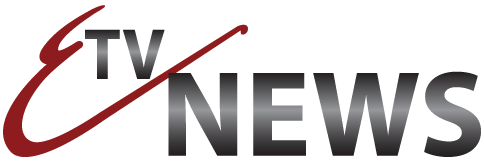USU Press Release
Organizations thrive most when men and women hold leadership roles and work together. This benefits not only businesses and communities but also state, city, and county governments.
Yet, research has shown that Utah’s socially conservative culture reinforces gender-based expectations and that those expectations play out in the experiences of Utah’s women leaders.
In 2020, the Utah State University Utah Women & Leadership Project (UWLP) published research to determine how reflective the leadership of Utah’s government organizations is of the communities they serve. The core question was, “How are women represented in formal leadership roles within governments in Utah?” The goal was to provide a baseline of the number of women in leadership roles that could be used in the future to learn where progress has been made.
A 2024 report was recently released to update the 2020 research and focuses on women leaders working in Utah’s public sector. Similar upcoming research will measure county and municipal levels.
According to Susan Madsen, USU UWLP founding director and a report author, initial data for the research study were collected through the Department of Human Resources Management. This provided information on 4,557 leadership positions representing 22,474 employees across 41 agencies and gave valuable insights into the current status of Utah women as leaders.
Madsen said that 41.4% of supervisory, managerial, and leadership positions in Utah state government are held by women, up from 39.3% in 2020.
“This is good news to see a 2 percent jump in four years,” she said. “It’s not huge, but it shows things are moving in the right direction. Even though this is still work to do, compared to many other industries in Utah, state government is leading the way in terms of progress with women in leadership roles.”
For national comparison, according to a 2016 report from the Council of State Governments (based on the most recent data from 2007), women in state governments nationwide held 32.2% of positions that included major policy-making responsibilities.
For the Utah report, each leadership position was categorized into four levels: cabinet – top leadership, elected state officers, and department directors; executive – deputy directors, division directors, judges, and court administrators; senior – middle management, including deputy/assistant division directors, general counsel/attorneys, and court clerks; and front line – supervisors, managers, administrators, coordinators, and analysts.
While women make up almost half of the state’s government workforce, their representation in leadership roles varies. Women comprise 42.2% of front-line leadership positions (up 1% from 2020). The most significant increase in women leaders was 10% in senior leadership roles, where 38.9% of the positions are held by women compared to 28.8% in 2020. However, there was a shift from women in higher leadership levels, where they now comprise 30.3% of executive leadership positions compared to 37.4% in 2020. On a positive note, there was an increase in women in cabinet-level roles, with 30.4% of the positions held by women (up from 27.1% in 2020).
“While there has been some upward movement, overall, these trends support the notion that women are still less likely than men to become leaders in Utah state government,” said Madsen.
National and global researchers have documented the “leaky leadership pipeline,” where comparable numbers of men and women start as front-line employees. Yet fewer women, particularly women of color, progress through the leadership ranks the way men do. The problem is not simply the total number of women in the public sector workforce; it is how those numbers translate across the levels of leadership. Utah data also reflect the leaky leadership pipeline.
Considerable research by public administration scholars has identified “masculine” agencies as primarily administrative (providing general infrastructure support), distributive (addressing issues about the general population, including transportation and energy agencies), and regulatory (implementing control and regulatory policies). Agencies characterized as “feminine” are mainly redistributive (reallocating money and services), including agencies such as education, social services, healthcare, the arts, and veteran’s affairs.
Madsen said because departments and divisions tend to adopt “masculine” and “feminine” divisions of labor, where a woman works will likely affect how her career progresses.
Research data show the percentage of women leaders in Utah government with 31.5% in administrative positions, 15.8% in distributive, 61.4% in redistributive, and 34.6% in regulatory. These data illustrate that, as predicted, redistributive agencies have the majority of women in leadership positions, at 61.4%, a slight increase from 2020. Regulatory agencies show 34.6% of women in leadership roles, including finance and tax (52.3%) and the courts (52.2%).
“It is uncharacteristic in these two areas to see such high percentages of women in leadership positions,” said Madsen. “Additional analysis may provide insights into how these agencies have been successful in advancing so many women, then other agencies can learn from them.”
The report provided four recommendations to help promote and encourage continued positive changes regarding women in leadership in state agencies.
- Be more intentional about the leadership ecosystem, particularly when it applies to jobs that men have traditionally held. This includes using gender-neutral language to describe positions and responsibilities (e.g., manpower = staff, foreman = crew, fireman = firefighter).
- Recognize the increasing need for qualified talent across industries, and public service roles may require implementing new strategies. In addition, recruiting women of all backgrounds for non-traditional fields can proactively address a workforce shortage issue.
- Evaluate hiring processes to eliminate potentially outdated language, unnecessary minimum qualifications, and other exclusionary measures.
- Commit to transparency. Tracking and sharing data regarding organizational leadership is the best practice for organizations and employees.
“When men and women share leadership roles and work together, businesses and communities flourish more abundantly and successfully, ultimately benefiting all of Utah and its residents,” concluded Madsen.
April Townsend, a research fellow for the UWLP, is the second author. Click here to see the full report.

